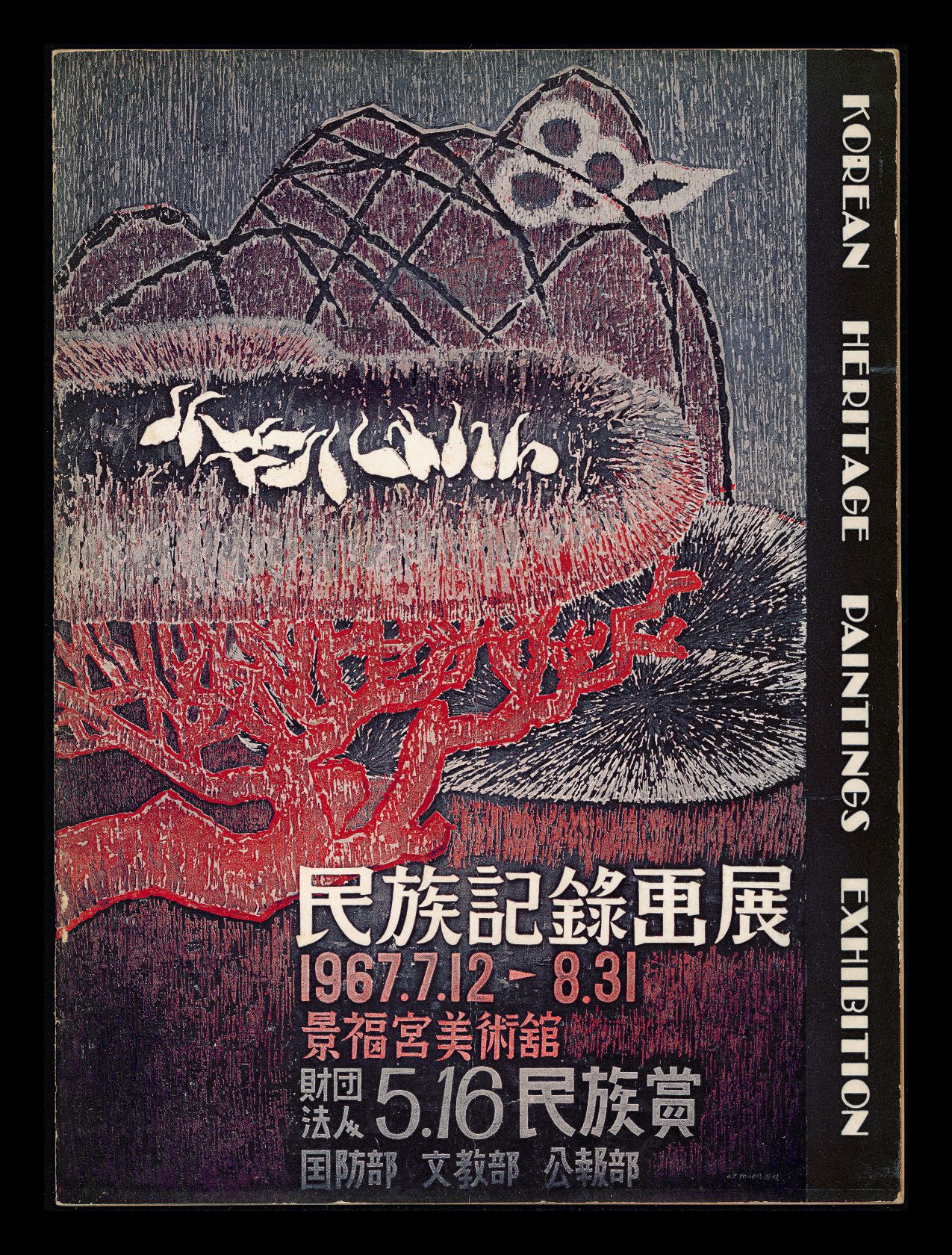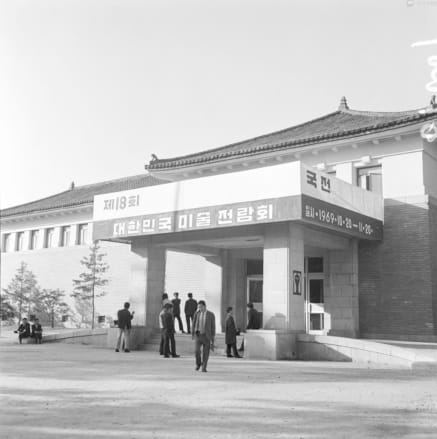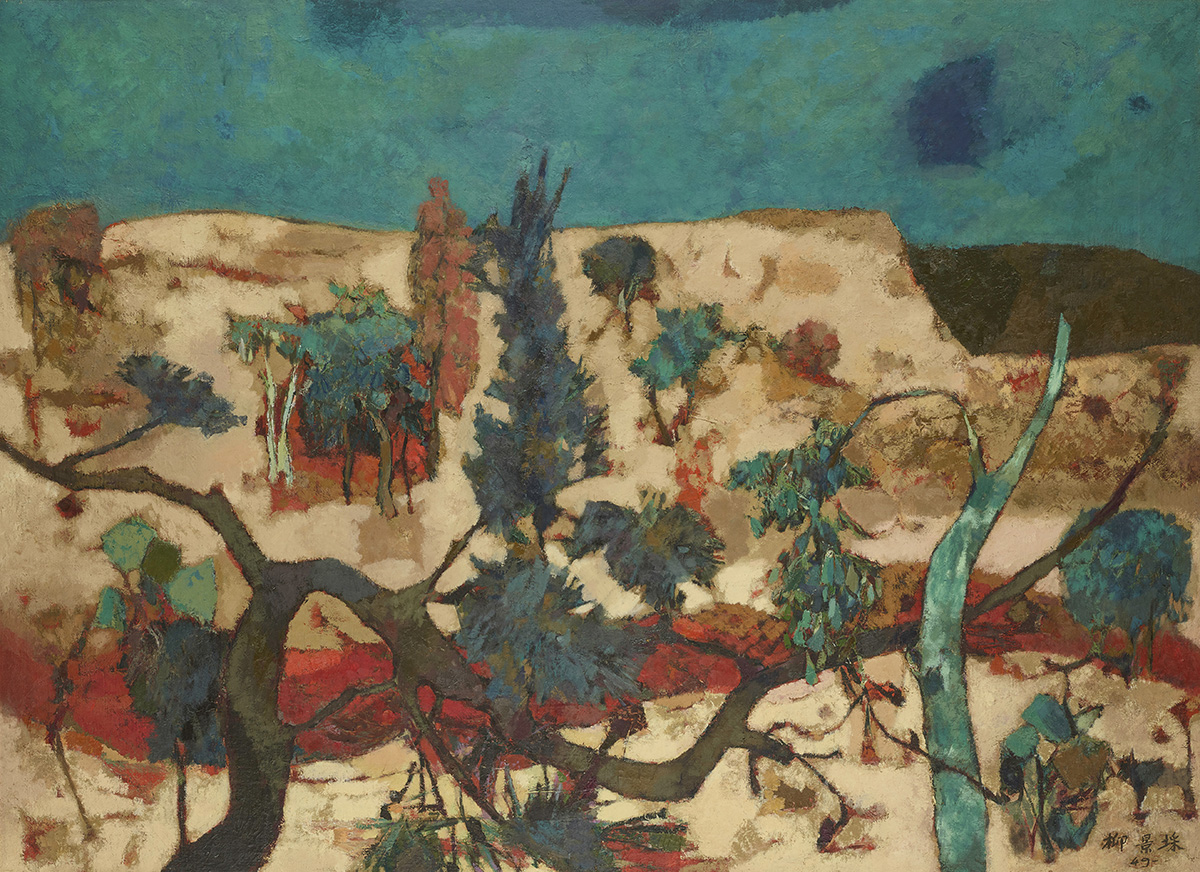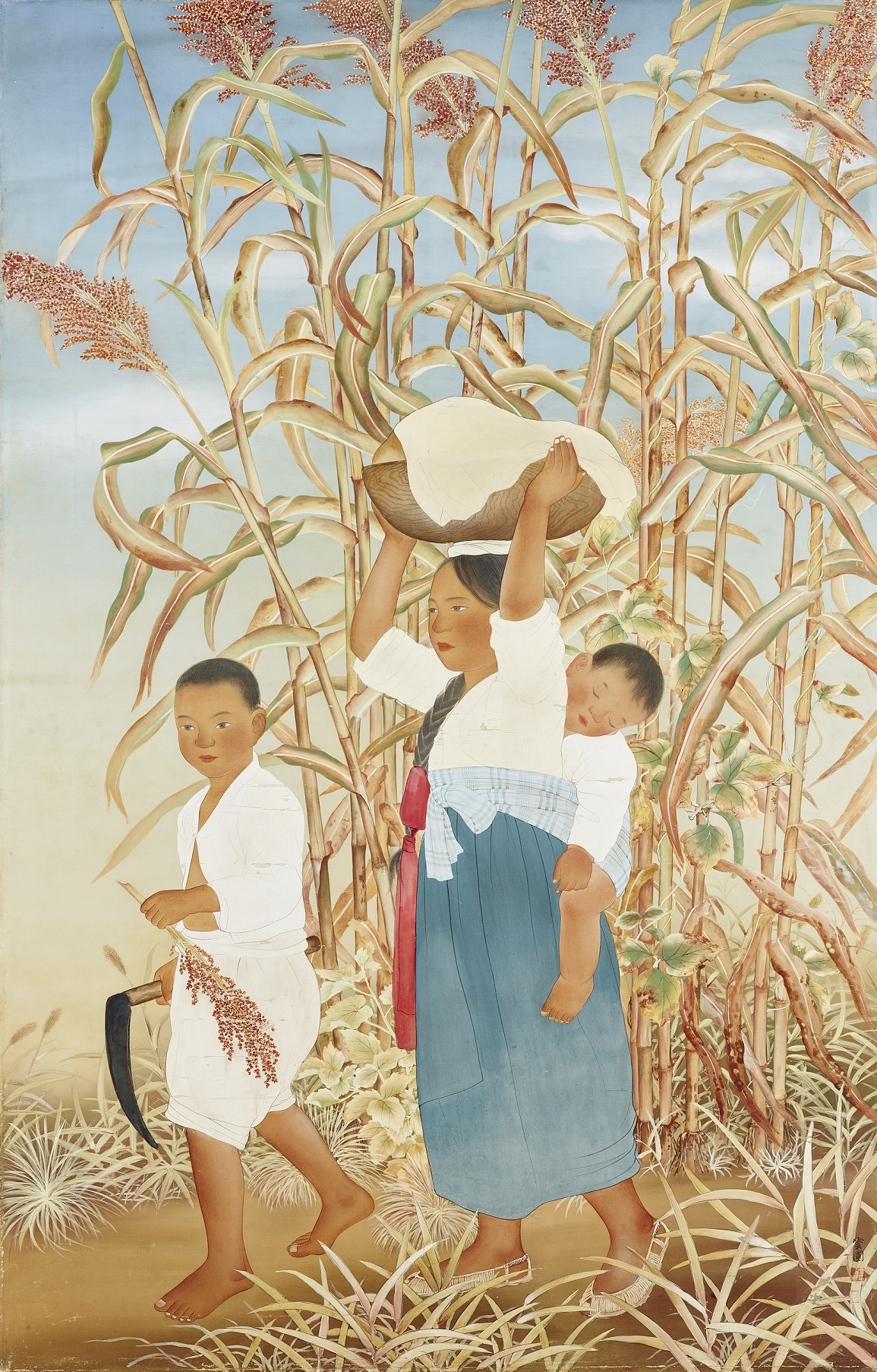
Korean Heritage Painting Exhibition, Pamphlet, 1967. MMCA Art Research Center Collection
Korean Heritage Painting
* Source: Multilingual Glossary of Korean Art. Korea Arts Management Service
Related
-

History painting
A painting that records and celebrates a significant historic event or the acts of a person. History paintings focus on heroic figures, they emphasize the historical significance of events rather than an accurate depiction of facts, and compositions that dramatize the scenes. Depending on the era, history paintings also incorporate the narratives from legends and mythology. Of pre-modern era history paintings, gyehoedo, which commemorate the gathering of Joseon-era literati, and euigwedo, which document court ceremonies, are also a type of history painting. During the Japanese colonial era, portraits of legendary figures such as Dangun and Dongmyeong and historical figures such as Yi Sun-sin were produced in biographical form. Korean artists were also recruited for the creation of Japanese seisen bijutsu (Holy War Art). In the context of late-20th century art production in Korea, history paintings were produced en masse from the 1960s to the 1970s through the Korean Heritage Painting project.
-

Gyeongbokgung Palace Museum
Gyeongbokgung Palace Museum was a national museum located in Gyeongbokgung Palace from 1949 to 1973. It was used as an exhibition hall for the National Art Exhibition (Gukjeon) of Korea. It became the Museum of the Japanese Government-General of Korea in 1939, then was used as a venue of the Joseon Art Exhibition until 1944 and became the Gyeongbokgung Palace Museum after Independence. In 1949, it was used for the first National Art Exhibition of Korea. It also hosted large scale exhibitions, such as the Science Exhibition, the National Middle and High School Student Art Exhibition, the International Children’s Art Exhibition, and the National Commercial and Industry Art Exhibition from the 1950s to the 1960s, especially when there were few public museums. In 1957, it hosted The Family of Man, a photographic exhibition which travelled around the world starting at the Museum of Modern Art in New York City. The Gyeongbokgung Palace Museum was also the base of the National Museum of Contemporary Art from 1969 until its relocation to Deoksugung Palace in 1973. It was used as the National Folk Museum of Korea from 1975 to 1993 and was demolished during the restoration project of Gyeongbokgung Palace in 1998.
Find More
-

Ryu Kyungchai
Ryu Kyungchai (1920-1995, pen name Pyunjeong) graduated from the Ryokuinsha Painting School in Tokyo in 1941. In 1949, he was awarded a presidential prize at the 1st National Art Exhibitions (Gukjeon), a Noteworthy Artist award in 1956, an Invited Artist award in 1959, before being selected as a judge for the 9th National Art Exhibition in 1960. He taught at Ewha Womans University from 1955 to 1961 and at Seoul National University from 1961 to 1986. He was appointed as a member of the Republic of Korea's National Academy of Arts in 1979 and was selected as president in 1987. Ryu Kyungchai’s works from the 1940s to 1950s, take nature as the main subject, and portray a pastoral style to describe the encounter between man and the environment. However, since Downtown Area in 1960, figuration gradually disappeared in his works as he moved toward abstraction. In the 1970s, he integrated the warmth and sentiment of nature into his abstract manner, and by the mid-1970s, figurative reference was increasingly replaced with colors in his works. By the late 1970s, he concentrated on pure abstraction on a flat monochrome plane. From the 1980s, he created geometric simplified forms of abstract art. Ryu Kyungchai is recognised as one of the first Korean artists to work in abstraction, and a pioneer within several national abstract art movements since the 1960s.
-

Kim Kichang
Kim Kichang (1913-2001, pen name Unpo or Unbo) studied Eastern painting at Kim Eunho’s art studio Nakcheongheon. After his debut in the tenth Joseon Art Exhibition [Joseon misul jeollamhoe] in 1931, he won special selections from 1937 to 1940, and became a renowned painter. He was appointed as the first president of Paek Yang Painting Association and became a professor at Hongik University and Soodo Women's Teachers College. He was awarded the Order of Civil Merit, Peony Medal in 1981 and the Korean Art Academy Award in 1983. After he passed away in 2001, he was awarded a posthumous Geumgwan Order of Culture Merit award. Although Kim initially focused on colorful figure paintings, following in the legacy of his mentor Kim Eunho, in his later career he collaborated with his wife Park Rehyun to modernize Korean painting by adopting cubism and abstraction. He reinterpreted traditional folk paintings in his representative works, such as Blue-green Landscape Painting series started in the 1970s and his Fool’s Landscape Painting in the 1980s and was inspired by portraits of historical figures. He contributed to the development of Korean modern art by working in an expanded formal territory from figuration to abstraction and addressing subject matter from folk painting, to figure and landscape painting.






